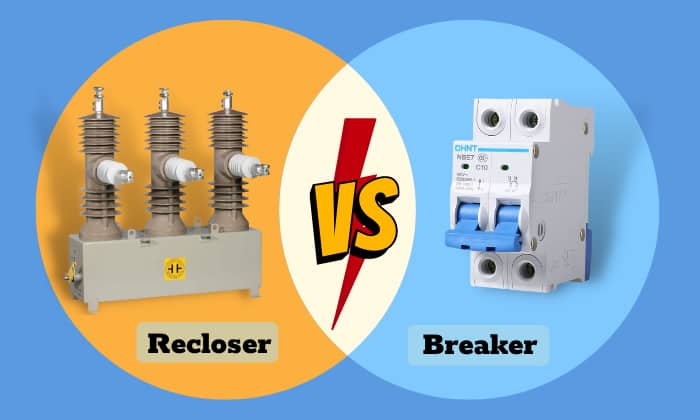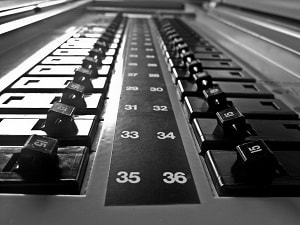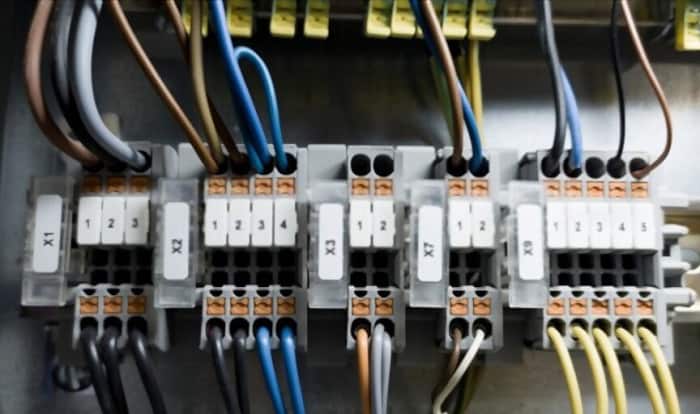Have you ever experienced a sudden power outage while using devices connected to a circuit? If the power returns after a few seconds, the cause may be the recloser and not your electrical setup.
When a problem occurs in the utility distribution system, the recloser automatically resets until the problem is resolved. If the fault cannot be removed, it will typically reset up to four times before cutting off the power completely.
Here is a recloser vs breaker comparison to help you distinguish the two.
Table of Contents
How Does Automatic Circuit Recloser Differ From Circuit Breaker?
What is a Circuit Breaker?
A power line circuit breaker is a tool that protects the circuit from shorts, ground faults, overloads, etc. It can detect damaging faults that bring harm to an electrical system.
When this happens, the circuit breaker immediately interrupts the connection of the entire power line. This way, it can protect electronic devices as well as prevent electrocution.
Circuit breakers are commonly used in residential and commercial electrical systems.
What is a Power Recloser?
As for the recloser definition, it is a high-voltage, self-controlled device mainly used in power distribution lines. It has an auto-reset feature that interrupts the flow of electricity when a fault occurs on the line.
Some leading recloser manufacturers are Eaton, Anixter, and Schneider. Their products are used on high-voltage lines, where 80 to 90% of electrical faults are temporary. These may include faults caused by lightning surges and animals like birds and gophers.
In these cases, the recloser will quickly restore the power supply without shutting down again.
However, if the fault is still present in the line after multiple resets, there is a high chance that it needs to be solved by the utility company.
In such a case, the recloser connection will remain open to prevent further damage. For a recloser to determine whether the fault is permanent, it will reset a few times before it completely removes the connection.
Differences and Pros and Cons of Recloser Switch and Circuit Breaker
1. Function
A recloser works with other electrical components to know which area needs its power interrupted. Similar to a circuit breaker, it can automatically trip, but a recloser is only repairable by its manufacturer, unlike a breaker.
2. Structure
A recloser and a circuit breaker both have an arc extinguishing chamber, but while the former has a magnet mechanism, the latter has a spring one. Reclosers also have a control system embedded in them, unlike breakers.
3. Control Method
Reclosers employ a variety of control mechanisms, including hydraulic and electronic control. On the other hand, a circuit breaker control system is its relay.
Operation Sequence
The operation sequence of a recloser is two fast and two slow. This means the recloser opens two times fast and two times slow in the event of a fault. This way, it can determine whether the fault is permanent or temporary.
Aside from this 2-2 combination, this sequence can be programmed based on utility standards (making the sequence 1 fast – 2 slow, for example). In comparison, a breaker uses one sequence that cannot be programmed.
4. Cost
A recloser for an utility line will generally handle much more current than the breaker you use for your lighting or TV. Therefore, reclosers are generally more expensive than your home breaker.
If you want to know more about these devices, I recommend watching a video online like the Eaton reclosers video below. This way, you can better understand how they work, as the clip also shows a recloser diagram.
Observe the video, including the recloser symbol and the simulation of its operation in a full-scale system.
FAQs
What is the Purpose of a Recloser?
The main purpose of a recloser electrical device is similar to a circuit breaker in a home electrical system.
In most cases, the electrical fault on the line is temporary, and a recloser will try to reset itself to clear the faults. Your home breaker doesn’t do this, however, and you have to reset it manually.
Is Auto Recloser a Circuit Breaker?
An automatic recloser is a special type of circuit breaker with some essential features used in a service line. The best feature of a recloser operation is its auto-resetting that tries to fix the problem in the power distribution.
This way, in the event of a temporary fault, there is no electrical personnel that needs to go to the power pole to restore electricity.
Where can I Use Recloser?
A recloser is typically used in conjunction with a power distribution system to ensure the safety of the connection from the substation to each home’s utility pole. It could be a single-phase, triple-single, or 3 phase recloser.
A single-phase recloser is mostly used in single-phase electrical lines and can be installed directly on the pole or substation. Similarly, a three-phase recloser is used in a three-phase circuit to improve its safety.
The triple-single can only be managed electronically and can be installed on a pole or substation.
Are there Different Control Types of Recloser?
Generally, two types of substation recloser controllers are used today, and they are hydraulic and electronic reclosers.
The oil circuit recloser may use hydraulic control, for example. Meanwhile, microprocessor-based or electronic systems are common in three-phase reclosers.
Conclusion
Reclosers are essential in reducing power disruption for utility customers. Their key features enable them to optimize the power system and minimize outages.
Finally, the primary recloser vs breaker difference is their control system and operation sequence.
If you found this article useful, please share it with your friends on social media.
Read more other comparisons:

I am Edwin Jones, in charge of designing content for Galvinpower. I aspire to use my experiences in marketing to create reliable and necessary information to help our readers. It has been fun to work with Andrew and apply his incredible knowledge to our content.



